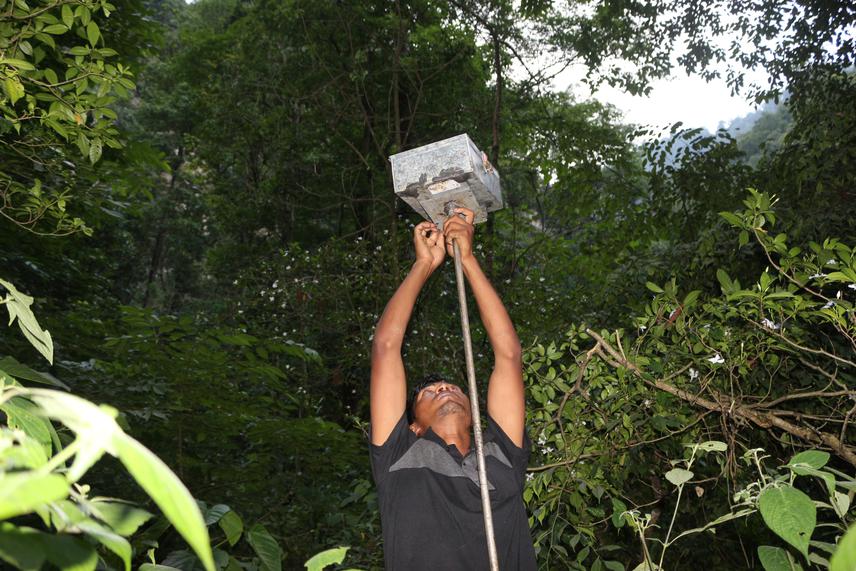Tshering Dendup
Other projects
Foraging activity of the animals is the indicator of pray abundance that determines the survival of the species. The type of food that the animal feed on is also a key to understand the interaction between animals and their habitats (Bumrungsri, 2002). Therefore, my research aims to study about the foraging activity of bats in Remnant forest situated in different terrains of agricultural landscapes in Southern part of Bhutan, ranging from 300 meters to 2500 meters above sea level.
Since, Bat acoustic monitoring is reliable and rapid technique for determining changes in bat Community, it also display foraging habitat selection of each species. Thus, by comparing foraging activities of bats acoustically in different landscapes, we would be able to identify the foraging species composition as well as species richness within the microhabitats. Moreover, from my research work, it will give the impact of remnant forest in feeding activity of the bats which will elaborate the ideas of taking actions towards the conservation of micro habitats in the anthropogenic areas.

Acoustic sampling from forest, Mr. Bikash (Field assistant).
The habitats and feeding activity of bats is so diversified and can be found in any isolated geographical condition including the most unwelcoming landscapes except, Antarctica (Altringham, 1996). However, the conversion of natural environments into agricultural land has profound effects on the composition of the landscape, often resulting in a mosaic of human altered and natural habitats (Mendes et al., 2017). Thus, the fragmentation of roosting habitats due to deforestation and environmental pollution across the globe has threatened the lives of chiroptera (Weller et al., 2009).
Bhutan being a fast agrarian economic growth and development country, has caused an exploitation of natural environment due to anthropogenic activities. As a result, the bats’ activity and species have been unknowingly threatened. Some of the living bats at present must be in the verge of extinction while, some must have vanished before it gets to be known by the conservationist to gear toward conservation.
Therefore, an intensive study in the field of foraging activity of the insectivorous bats will be carried out during the peak crop growing season of the year 2018. Bat activity will be monitored acoustically by using the bat detector, Pattersson D240x from sunset till sunrise. However, acoustic sampling will be carried out only in the favorable weather conditions and avoid the full moon nights to overcome the bias in acoustic samplings. For sampling, study area will be divided into blocks which will have every targeted microhabitat within the block.
Trapping methods like Mist net and Harp traps will be set simultaneously to capture the bats for identification to species level. Every captured species will record the calls to establish call reference which can be monitored acoustically in terms of foraging activities from different habitats. More importantly, call references from my present study will be greatly beneficial to future researcher to study in the field of chiroptera acoustically which will gear to the conservation of the bats of Bhutan.
Since, it is largely unknown in terms of population, status, distribution and threats to the bats, (Choden, 2009) in Bhutan at present, I am much confident to state that some of the species must have extinct before it gets to known by the people scientifically and some must be in the verge of extinction. Some forest species are particularly rare, such as Kerivoula spp.. This genus is complicated in its taxonomy as it found to be a new species in several recent study. This study may give insight of actual diversity of this genus in Bhutan. Therefore, my work will be contributed as an acoustic research knowledge to my country, Bhutan and by large to the whole nations towards the conservation of bats.